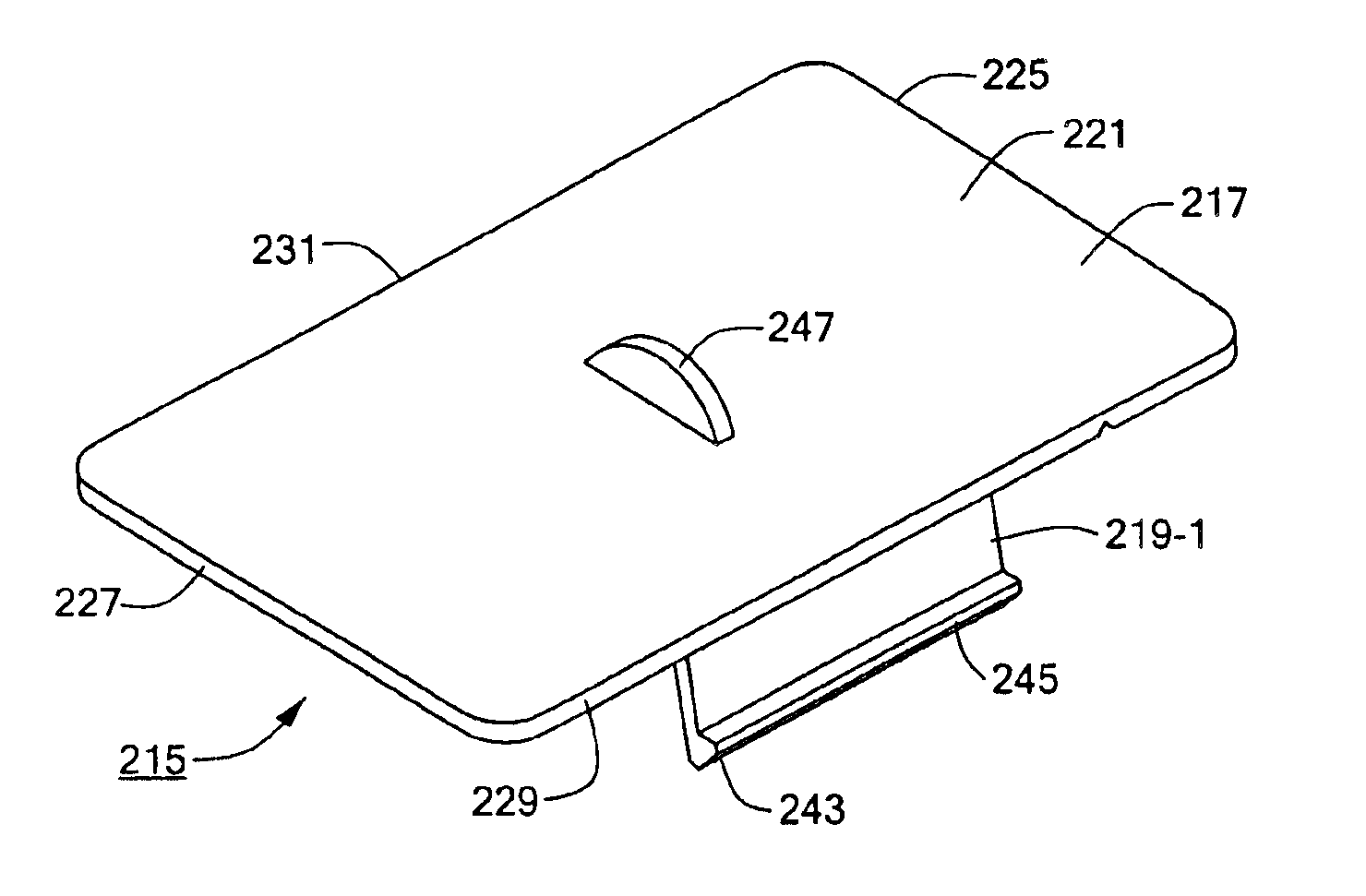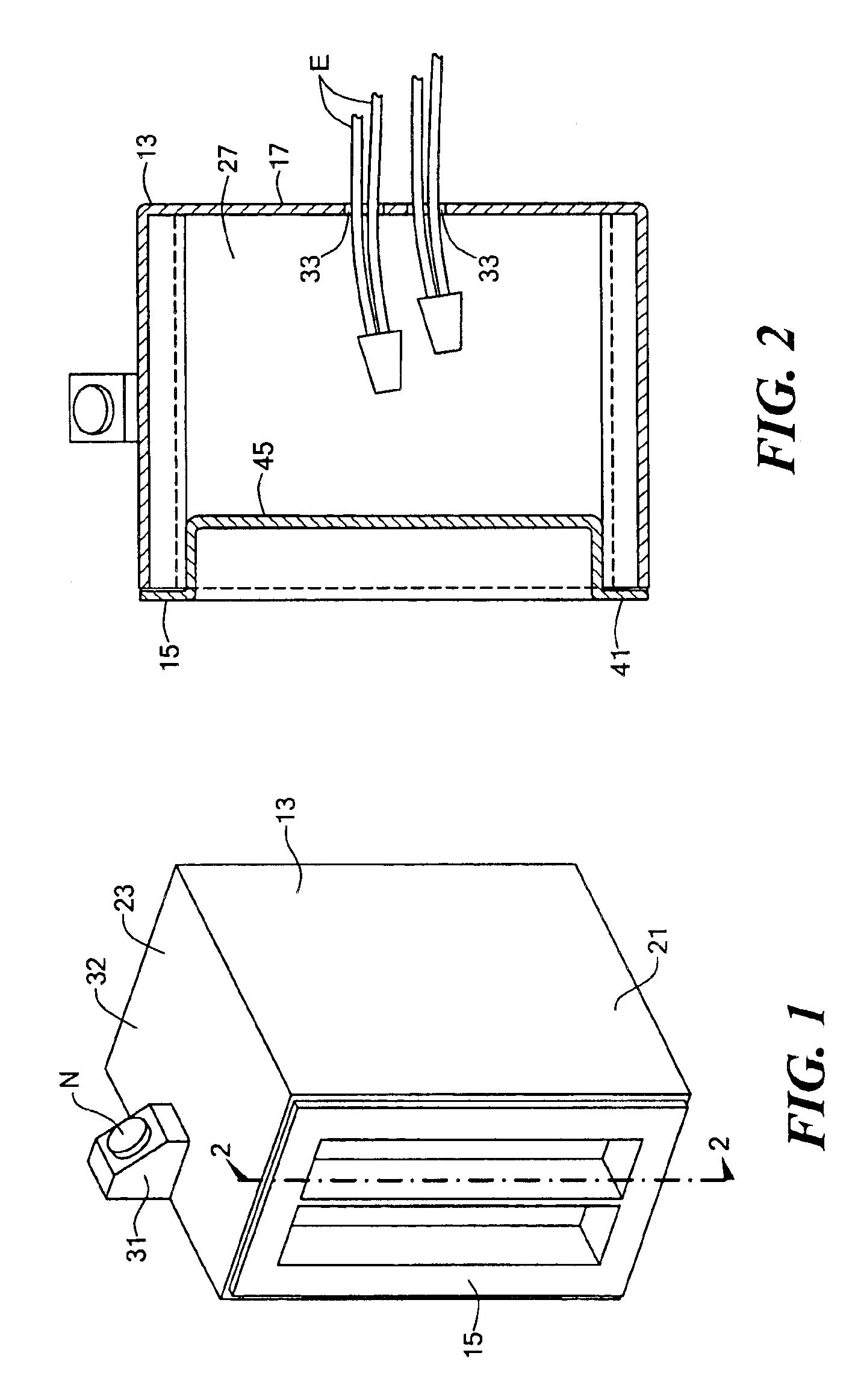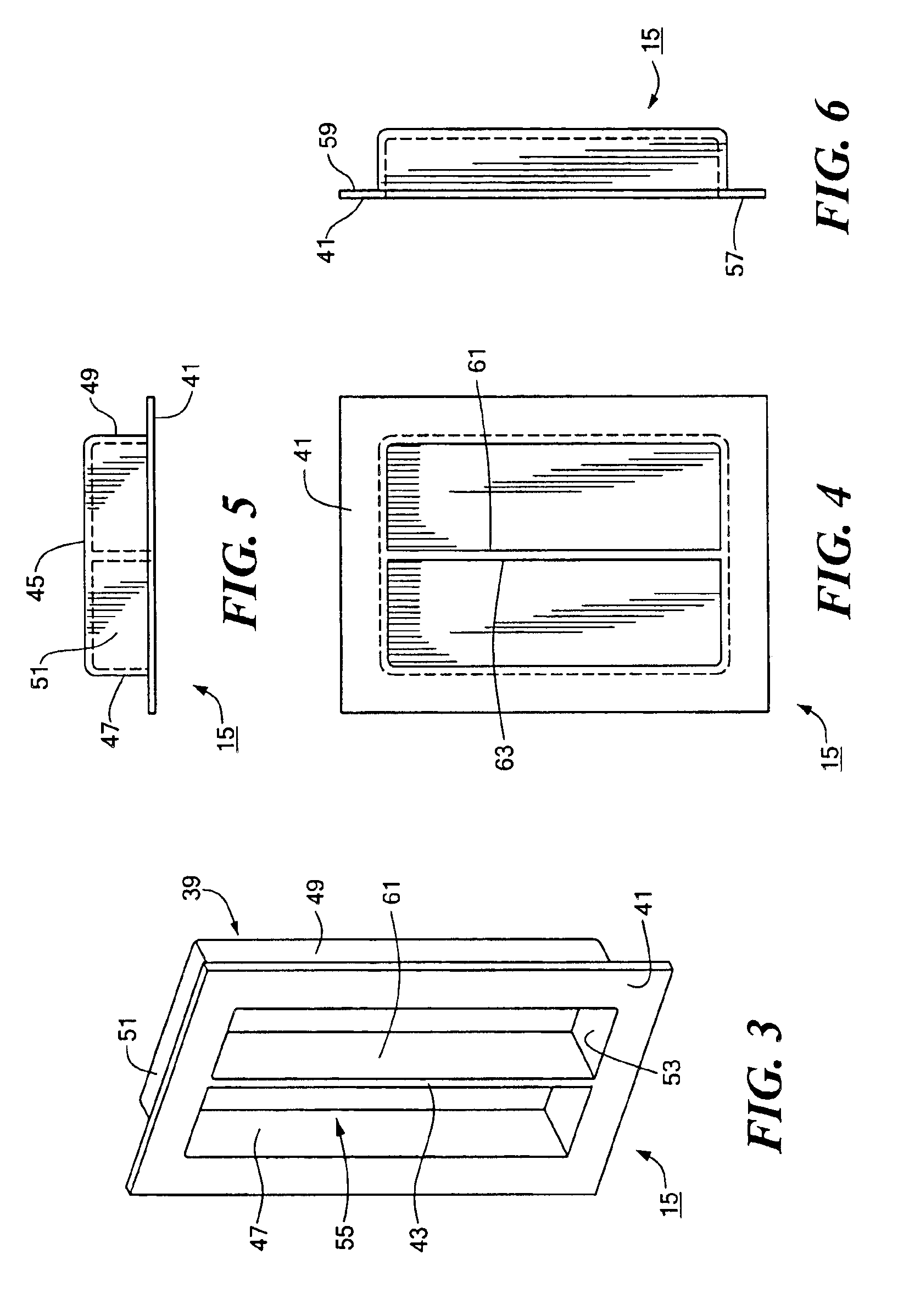Temporary protective cover for an electrical box
- Summary
- Abstract
- Description
- Claims
- Application Information
AI Technical Summary
Benefits of technology
Problems solved by technology
Method used
Image
Examples
first embodiment
Referring now to FIG. 1, there is shown a cover which is adapted to be removably mounted onto an electrical box, said cover being constructed according to the teachings of the present invention. For purposes of identification, the electrical box is represented generally by reference numeral 13 and the cover is represented generally by reference numeral 15.
As will be described further in detail below, electrical box 13 serves two principal functions. First, electrical box 13 serves as a mounting structure for installing an electrical device, such as an outlet, switch or fixture, into a covering, such as a wall or ceiling panel. Second, electrical box 13 serves as a connection point for coupling the electrical device to electrical wires which, in turn, are connected to a main power source.
Electrical box 13 is a conventional new-work, electrical wall box which is constructed out of a nonmetallic material, such as plastic. Electrical box 13 is represented herein as a single gang electri...
second embodiment
As an example, referring now to FIG. 12, there is disclosed a cover which is adapted to be removably mounted onto an electrical box, said cover being constructed according to the teachings of the present invention. For purposes of identification, the electrical box is represented generally by reference numeral 73 and the cover is represented generally by reference numeral 75.
Electrical box 73 is a conventional new-work, electrical wall box which differs from electrical box 13 only in that electrical box 73 is a three gang electrical box (i.e., designed to be used as a mounting structure for three electrical devices), whereas electrical box 13 is a single gang electrical box (i.e., designed to be used as a mounting structure for a single electrical device). Accordingly, cover 75 differs from cover 15 in that cover 75 is substantially larger than cover 15. Specifically, cover 75 is sized and shaped to be removably mounted onto electrical box 73, which is considerably larger than elect...
third embodiment
As another example, referring now to FIG. 13, there is disclosed a cover which is adapted to be removably mounted onto an electrical box, said cover being constructed according to the teachings of the present invention. For purposes of identification, the electrical box is represented generally by reference numeral 83 and the cover is represented generally by reference numeral 85.
Electrical box 83 is a conventional new-work, electrical box which differs from electrical box 13 only in that electrical box 83 is designed to be used as a ceiling box, whereas electrical box 13 is designed to be used as a wall box. As such, electrical box 83 preferably has a generally circular shape and comprises a circular back panel 87 and a single circular side panel 89 which extends orthogonally out from back panel 87. Accordingly, cover 85 differs from cover 15 in that cover 85 is generally circular in shape so as to enable cover 85 to be removably mounted onto electrical box 83.
PUM
 Login to View More
Login to View More Abstract
Description
Claims
Application Information
 Login to View More
Login to View More - R&D
- Intellectual Property
- Life Sciences
- Materials
- Tech Scout
- Unparalleled Data Quality
- Higher Quality Content
- 60% Fewer Hallucinations
Browse by: Latest US Patents, China's latest patents, Technical Efficacy Thesaurus, Application Domain, Technology Topic, Popular Technical Reports.
© 2025 PatSnap. All rights reserved.Legal|Privacy policy|Modern Slavery Act Transparency Statement|Sitemap|About US| Contact US: help@patsnap.com



